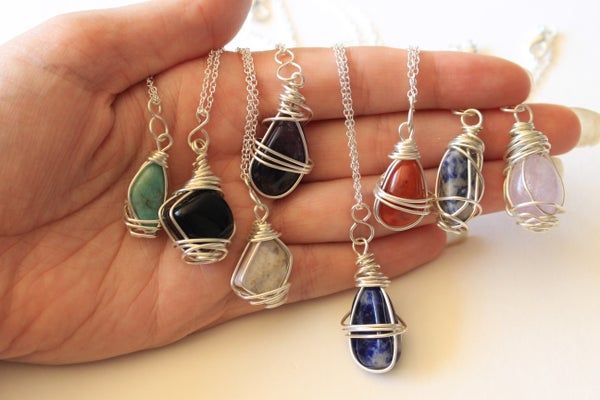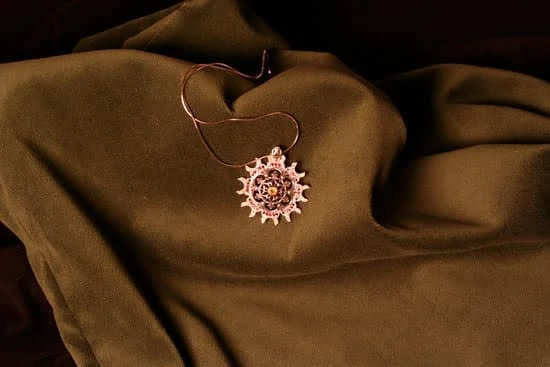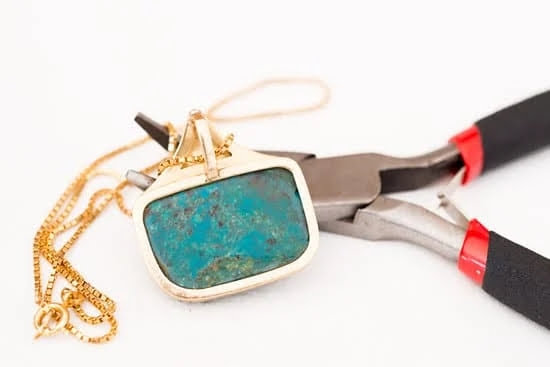Have you ever wanted to try your hand at making unique and beautiful jewelry? If so, then learning how to make polymer clay bead jewelry is the perfect craft for you.
Polymer clay beads offer endless possibilities for creativity and personal expression, making them an ideal choice for creating one-of-a-kind pieces. In this article, we will explore the beauty and versatility of polymer clay beads and provide you with a comprehensive guide on how to create stunning jewelry using this versatile medium.
Creating polymer clay bead jewelry is a fun and rewarding activity that allows you to unleash your creativity and make personalized accessories that reflect your own style. In order to get started, you will need a selection of tools and supplies including different types of polymer clay, bead molds, shaping tools, texture materials, and finishing products. By understanding these materials, you can begin the process of designing and crafting your own unique pieces of jewelry.
When working with polymer clay beads, it’s essential to understand the techniques involved in shaping and designing the beads. Whether you’re interested in creating simple round beads or more intricate shapes such as flowers or animals, there are various methods for shaping the clay into different forms.
Additionally, choosing the right colors and textures for your beads can greatly enhance their overall appearance. This article will provide step-by-step instructions on preparing the clay, conditioning it properly, and selecting the best colors and textures for your designs.
Materials Needed
Polymer clay bead jewelry is a unique and versatile craft that allows for endless creativity and expression. Making your own polymer clay bead jewelry is not only fun, but it also allows you to create one-of-a-kind pieces that reflect your personal style. In order to get started with this craft, you will need a variety of tools and supplies to help you bring your creative vision to life.
The first essential item needed for creating polymer clay bead jewelry is, of course, polymer clay. There are different types and brands of polymer clay available in the market, each with its own unique properties and characteristics. Some popular brands include Fimo, Sculpey, and Kato Polyclay. It’s important to choose a high-quality clay that is easy to work with and produces durable beads.
In addition to polymer clay, you will also need a few basic tools such as a craft knife for cutting the clay, sandpaper for smoothing and finishing the beads, bead racks for baking the beads evenly, and a needle tool for making holes in the beads. Furthermore, investing in some bead molds can help you create consistent shapes and sizes for your beads.
Other essential items include an acrylic roller for rolling out the clay, an oven thermometer to ensure accurate baking temperatures, as well as a dedicated oven or toaster oven for baking the beads.
Creating beautiful polymer clay bead jewelry requires attention to detail and having the right tools at your disposal can make all the difference in the quality of your finished pieces. Whether you’re a beginner or an experienced crafter looking to expand your skills, having a comprehensive list of tools and supplies will set you up for success when venturing into this exciting craft.
| Materials Needed | Essential Items |
|---|---|
| Polymer Clay | Fimo, Sculpey, Kato Polyclay |
| Basic Tools | Craft knife, Sandpaper, Bead racks, Needle tool |
| Bead Molds | Help create consistent shapes |
| Acrylic Roller Toaster Oven / Dedicated Oven |
Getting Started
Creating beautiful polymer clay bead jewelry starts with getting started in the right way. The process begins with properly preparing the clay, conditioning it, and selecting the perfect colors and textures for your beads. Here’s a step-by-step guide on how to get started:
First, prepare your work surface by laying down parchment paper or a silicone baking mat to prevent the clay from sticking. Then, make sure your hands and tools are clean to avoid any unwanted marks or dirt on the clay.
Next, it’s important to condition the polymer clay before shaping it into beads. To do this, simply soften the clay by kneading it with your hands until it becomes pliable and easy to work with. This will help ensure that your beads have a smooth and even texture.
Once the clay is conditioned, it’s time to choose the colors and textures for your beads. You can mix different colors of polymer clay together to create unique shades, or add textures such as metallic powders or mica flakes for an extra touch of shimmer and sparkle.
By following these step-by-step instructions for preparing the clay, conditioning it, and choosing the right colors and textures for your beads, you’ll be well on your way to creating stunning polymer clay bead jewelry. Experiment with different color combinations and textures to unleash your creativity and give each piece a personalized touch.
Shaping and Designing
When it comes to making polymer clay bead jewelry, the shaping and designing process is where you can truly let your creativity shine. Whether you prefer classic round beads or want to experiment with more intricate designs, there are countless techniques to explore. Here are some tips and techniques to help you shape the clay into beads of different shapes and sizes, as well as create unique patterns and designs.
1. Choose Your Shape: Before diving into the actual shaping process, consider what shape you want your beads to be. From simple rounds to ovals, hearts, cubes, or even free-form shapes, the possibilities are endless. Make a list of the shapes you want to work with before starting.
2. Rolling Beads: For basic round beads, simply roll small pieces of conditioned clay between your palms until they form a smooth ball. To ensure uniformity in size, you can use a small ruler or makeshift template to measure each bead as you go.
3. Creating Patterns and Designs: To add visual interest to your beads, consider incorporating patterns and designs. This can be achieved by layering different colors of clay, using texturing tools or stamps to imprint designs onto the surface, or even adding inclusions like glitter or metallic powder for a unique touch.
4. Experiment with Techniques: Don’t be afraid to experiment with various shaping techniques such as marbling (mixing different colored clays together), caning (layering colors and creating a design that runs through the length of the bead), or using molds for more complex shapes.
By exploring these shaping and designing techniques, you’ll be able to create polymer clay beads that are truly one-of-a-kind and showcase your individual style and creativity.
Baking and Curing
One of the most crucial steps in creating polymer clay bead jewelry is the baking and curing process. Properly baking the beads ensures that they are hardened and durable, ready to be assembled into stunning pieces of jewelry. Here’s a detailed guide on how to bake and cure polymer clay beads, including time and temperature settings, and essential tips for ensuring a successful outcome.
Materials Needed
- Oven thermometer
- Baking sheet
- Parchment paper
- Timer
Step 1: Preparing the Oven
Before you start baking your polymer clay beads, it’s essential to preheat your oven to the correct temperature. This will ensure that the beads cure properly without burning or becoming brittle. Place an oven thermometer inside the oven to verify that the temperature is accurate.
Step 2: Baking Process
Once the oven is preheated, carefully arrange your polymer clay beads on a baking sheet lined with parchment paper. Make sure there is enough space between each bead to allow for even baking. Set a timer based on the thickness of your beads and refer to the manufacturer’s instructions for recommended baking times.
By following these steps, you can achieve perfectly baked polymer clay beads that are durable and long-lasting, ready to be transformed into beautiful jewelry pieces. Understanding the importance of proper baking and curing techniques will ensure that your creations stand the test of time.
Experiment with different combinations of colors, textures, and designs to create unique polymer clay bead jewelry that reflects your personal style. With practice and patience, you can master how to make polymer clay bead jewelry like a pro.
Finishing Touches
When it comes to creating polymer clay bead jewelry, the finishing touches can truly make a piece stand out. Adding embellishments, textures, and finishes to your beads not only enhances their appearance but also improves their durability. There are many ways to achieve this, whether it’s through surface treatments, adding decorative elements, or applying protective coatings.
One popular way to add embellishments to polymer clay beads is by using metallic powders or leafing. These can create a beautiful shimmer or metallic sheen on the beads, giving them an elegant and professional finish. Additionally, you can experiment with different textures by using tools such as texture sheets, stamps, or carving tools to create unique patterns and designs on the surface of the beads.
For added durability and protection, consider applying a clear varnish or resin coating to your finished beads. This not only adds a glossy finish but also helps protect the beads from wear and tear. It’s important to follow manufacturer instructions for curing and applying these finishes to ensure the best results.
Incorporating other materials such as crystals, gemstones, or metal accents can also elevate the look of your polymer clay bead jewelry. Whether it’s adding a touch of sparkle with Swarovski crystals or creating contrast with metal findings, these embellishments can take your jewelry pieces to the next level.
| Embellishment Type | Benefits |
|---|---|
| Metallic Powders/Leafing | Creates shimmer or metallic sheen; gives elegant finish |
| Textures (using texture sheets, stamps) | Provides unique patterns and designs on the surface of beads |
| Clear Varnish/Resin Coating | Adds durability and protection; creates glossy finish |
| Crystals/Gemstones/Metal Accents | Elevates look of jewelry pieces; adds sparkle and contrast |
Assembling Your Jewelry
Stringing Your Beads
Once you have created your beautiful polymer clay beads, it’s time to turn them into stunning jewelry pieces. One popular method for incorporating these beads into jewelry is stringing them onto a necklace or bracelet. To do this, you will need beading wire, clasps, and crimp beads.
Begin by laying out your design on a bead board or flat surface and carefully measure the desired length of the jewelry piece. Then, use needle-nose pliers to attach the clasp to one end of the beading wire and begin stringing the polymer clay beads in your chosen pattern. Finish by attaching the other end of the clasp using crimp beads to secure it in place.
Wire Wrapping for Earrings
For those interested in making earrings with their polymer clay beads, wire wrapping is a popular technique that offers endless design possibilities. Start by choosing a suitable gauge of wire for your project and selecting any additional accent beads or findings you would like to incorporate into your earring design.
Use round-nose pliers to form loops at the ends of the wire and attach your polymer clay bead along with any other desired elements. Once completed, simply attach earring hooks to the loops for a finished pair of earrings.
Incorporating Beads Into Bracelets
Another exciting way to incorporate polymer clay beads into jewelry is through bracelet-making. Whether using stretchy cord, memory wire, or traditional bead stringing techniques, there are countless ways to create unique and eye-catching bracelets using polymer clay beads. Consider mixing different shapes and textures of beads together for added interest and experiment with various color combinations to achieve a truly personalized look.
By learning how to make polymer clay bead jewelry and utilizing these techniques for assembling your finished pieces, you can create professional-looking jewelry that reflects your personal style while showcasing your handmade polymer clay beads as unique works of art.
Tips and Tricks
Choosing the Right Polymer Clay
When working with polymer clay bead jewelry, it’s essential to select the right type of clay for your project. There are various brands and types of polymer clay available, each with its own unique characteristics and properties.
It’s important to consider factors such as color selection, hardness, and flexibility when choosing the right clay for your beads. Additionally, understanding the curing process and whether the clay needs to be baked or air-dried is crucial in achieving successful results.
Avoiding Air Bubbles
One common challenge when working with polymer clay bead jewelry is the formation of air bubbles within the clay. These air bubbles can ruin the appearance of your beads and compromise their structural integrity. To prevent this issue, it’s important to properly condition the clay by kneading it thoroughly and using a roller to eliminate any trapped air. Additionally, using a piercing tool to release any air pockets before baking can help ensure a smooth finish for your beads.
Creating Uniform Beads
Achieving uniformity in size and shape can be challenging when making polymer clay beads. To address this issue, consider using bead molds or templates to create consistent shapes for your beads. These tools can help you achieve professional-looking results and save time during the shaping process. Additionally, taking extra care in measuring and dividing the clay into equal portions before shaping can also contribute to achieving uniformity in your bead designs.
Expert Troubleshooting Advice
Despite best efforts, issues may arise when working with polymer clay bead jewelry. Whether it’s cracks forming during baking or difficulties in attaching findings to finished beads, there are expert troubleshooting tips that can help you overcome these challenges. Understanding how to repair minor flaws or imperfections in your beads after curing, as well as learning techniques for securely attaching findings without damaging the beads, are valuable skills that will enhance your crafting experience.
These expert tips and troubleshooting advice aim to empower crafters who are venturing into creating polymer clay bead jewelry, providing them with valuable insights on how to overcome common challenges and achieve satisfying results in their projects.
Inspiration and Ideas
When it comes to making polymer clay bead jewelry, the possibilities are endless. The beauty and versatility of polymer clay beads make them the perfect medium for creating unique and stunning jewelry pieces. From vibrant colors to intricate designs, polymer clay beads can be used to bring any jewelry idea to life. In this section, we’ll showcase examples of beautiful polymer clay bead jewelry to inspire readers and provide them with ideas for creating their own unique designs.
One of the most exciting aspects of working with polymer clay bead jewelry is the ability to experiment with different colors and textures. Whether you prefer bold, bright hues or subtle, earthy tones, polymer clay allows you to create beads in any color imaginable. Additionally, you can mix and blend different colors of clay to achieve marbled or gradient effects, adding depth and visual interest to your jewelry designs.
In addition to color, polymer clay beads can also be designed with various textures and patterns. From smooth and glossy finishes to rough or textured surfaces, polymer clay beads offer a wide range of options for adding dimension to your jewelry pieces.
You can also use tools and techniques such as stamping, carving, or embossing to create unique patterns on the surface of the beads. These design elements can elevate a simple bead into a one-of-a-kind artistic statement piece.
Finally, showcasing examples of beautiful finished jewelry pieces made with polymer clay beads can serve as inspiration for readers looking to unleash their creativity. From dainty earrings and delicate pendants to bold statement necklaces and chunky bracelets, there are countless ways to incorporate polymer clay beads into stunning jewelry designs.
By providing visually appealing examples of what is possible with polymer clay bead jewelry, readers can be inspired to experiment with their own designs and create personalized pieces that reflect their individual style.
Conclusion
In conclusion, polymer clay bead jewelry offers an exciting and unique opportunity for crafting enthusiasts to unleash their creativity and experiment with a versatile and colorful medium. The process of creating these beautiful beads allows for endless possibilities in terms of shapes, colors, and designs. With the right materials and techniques, anyone can learn how to make polymer clay bead jewelry and bring their creative visions to life.
For those who are new to working with polymer clay, this article has provided a comprehensive guide on the materials needed, getting started, shaping and designing techniques, baking and curing process, finishing touches, assembling jewelry pieces, as well as expert tips and troubleshooting advice. With this knowledge at their disposal, readers can confidently embark on their journey of crafting stunning polymer clay bead jewelry.
Furthermore, the article has also showcased examples of beautiful polymer clay bead jewelry to inspire readers and encourage them to explore their own unique designs. Whether it’s a statement necklace or a pair of elegant earrings, the possibilities are truly endless when it comes to creating personalized accessories with polymer clay beads.
By providing resources for further learning and exploration of this fascinating craft, readers are empowered to continue honing their skills and taking their creativity to new heights in the world of jewelry making. Happy crafting.
Frequently Asked Questions
How Do You Make Polymer Clay Beads for Jewelry?
To make polymer clay beads for jewelry, start by conditioning the clay to make it soft and pliable. Then, shape the clay into beads using your hands or molds. Once shaped, bake the beads in the oven according to the package instructions.
How Do You Seal Polymer Clay Beads?
After making polymer clay beads, it’s important to seal them to protect the surface and enhance their appearance. You can seal polymer clay beads by brushing on a thin layer of clear varnish or resin once they have been baked and cooled.
Can You Bake Beads in Polymer Clay?
Yes, you can bake beads made from polymer clay. After shaping the beads and creating any desired designs or patterns, place them on a baking sheet and bake them in a preheated oven according to the instructions provided with the specific type of polymer clay you are using.

Welcome to my jewelry blog! My name is Sarah and I am the owner of this blog.
I love making jewelry and sharing my creations with others.
So whether you’re someone who loves wearing jewelry yourself or simply enjoys learning about it, be sure to check out my blog for insightful posts on everything related to this exciting topic!





